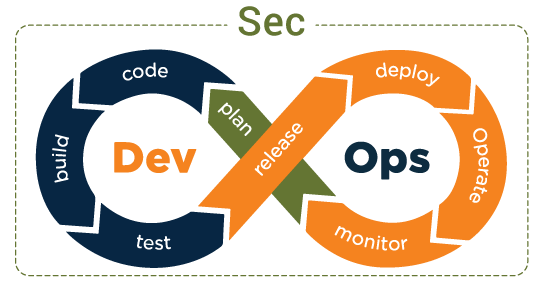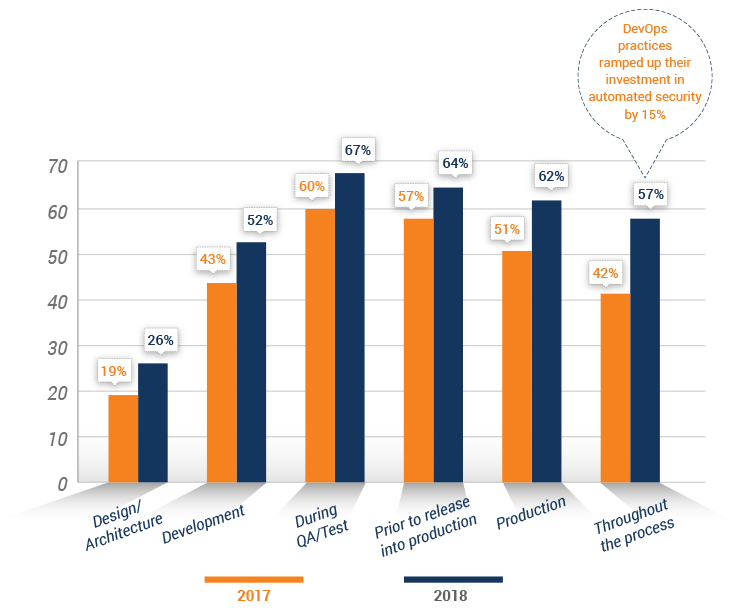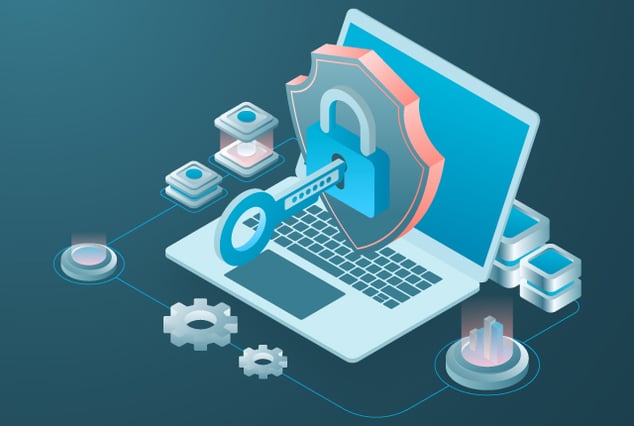DevSecOps is an approach to thinking about application and infrastructure security from the beginning. It is mainly about built-in security, and not just the security that functions as a perimeter around apps and data.
DevSecOps
DevSecOps means introducing security earlier in the application development life cycle. This minimizes vulnerabilities and facilitates ‘Security as Code’ culture with collaboration between engineers and security teams.
Earlier, security was treated as a secondary system. Nowadays, security of the data shared on the web is an alarming issue. Therefore, a DevOps-oriented application should feature security verification as an active and integrated part of the SDLC under "DevSecOps". Continuous Integration (CI) and Continuous Delivery (CD) ensure active testing, security audits and penetration testing into the Agile development.
DevSecOps can be implemented in any environment. It helps companies to release new products and updates on a quicker pace and with full assurance that security is nested into the product.

DevSecOps Trends
As the world witnessed record breaches in 2017, leading IT teams were integrating and automating more security practices throughout the software development life cycle to better fortify applications and protect their data.
Let’s have a look at DevSecOps Community Survey 2018 by Sonatype in which experienced IT professionals from all over the world took part.
In 2018, DevOps practices ramped up its investment in automated security by 15% as compared to 2017.
Automated Application Security Analysis In Different Stages Of Development

DevSecOps market size is expected to grow from USD 1.5 billion in 2018 to USD 5.9 billion by 2023 with Compound Annual Growth Rate (CAGR) of 31.2%.
Attractive Opportunities in DevSecOps Market

Best Practices For DevSecOps
Apply Security Policies to API
Approach API security from consumption and exposure perspectives. Manage security keys, certificate policies, tokens, authentication, and authorization policies
Generate Alerts on Discovering an Issue
Deploy a tool that notifies the team and send actionable alerts when an issue is discovered
Perform Security Tests Over the Dev Cycle
Perform tests on applications, containers, APIs, processes, data, and microservices
Create Strong Data Policies
Manage the data life cycle and flow. Create audit logs should be created before and after any security issue
Block the Attacks
Monitor traffic to detect and block attacks like access violation, DDoS, etc.
Limit the Attack Surface
Integrate protection and detection measures in the architecture to limit attack surface like web forms and session management codes
Perform Threat Modeling Activities
Understand the sensitivity level, type of assets it is protecting, potential threats, and it’s impact
Benefits of DevSecOps Strategy

- Greater compliance with industry regulations
- Faster recovery in case of any security incident
- Greater encryption and authorization management
- Monitor, deploy, secure, and notify systems from the beginning
- Prepared to protect the data, infrastructure hardware, and software
Have Suggestions?
We would love to hear your feedback, questions, comments and suggestions. This will help us to make us better and more useful next time.
Share your thoughts and ideas at knowledgecenter@qasource.com


